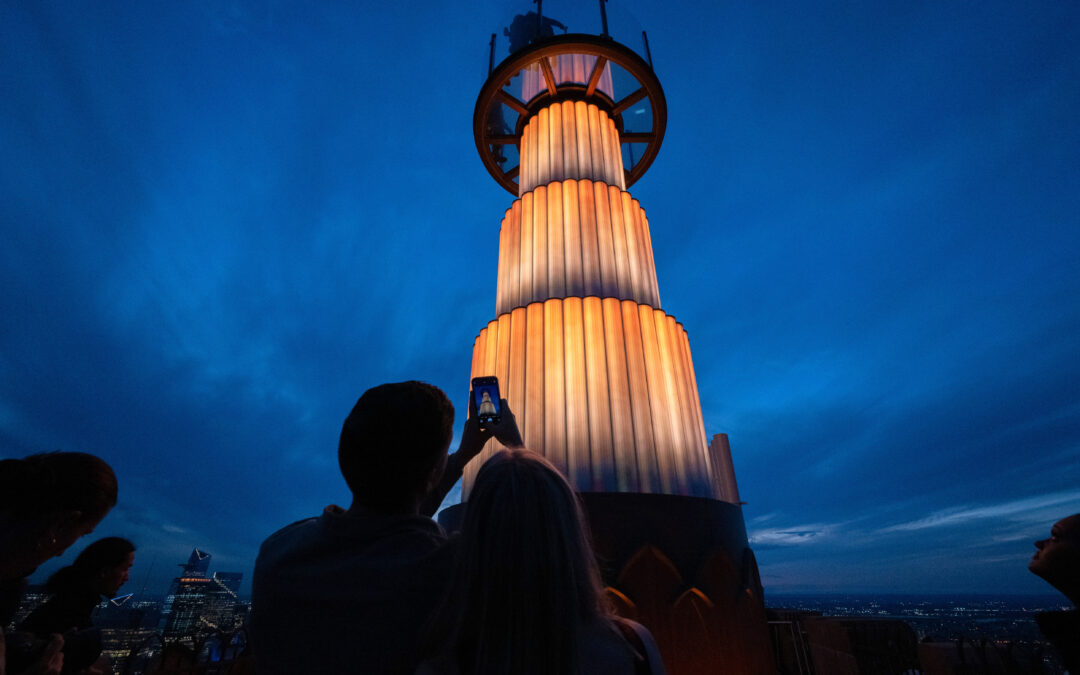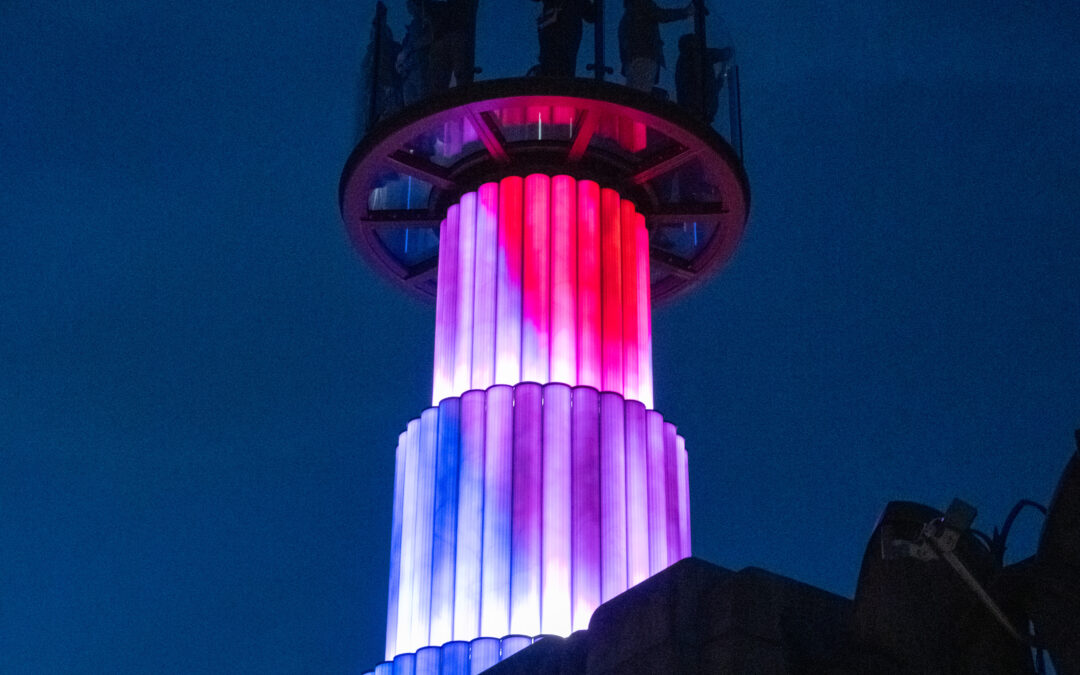Office Landlords Race To Renovate Buildings As Workers Start Trickling Back Into Office
Bisnow – As the city that never sleeps begins to awake from a 14-month slumber, new building permits hit a decade low. But while there may not be many cranes along Manhattan’s skyline, commercial landlords in the country’s largest office market are rushing to prepare for the post-pandemic New York by giving their interiors a makeover.
In the first quarter of this year, permits in New York City for significant renovations were issued at a rate nearly 16% above the quarterly average for the 10 years prior, according to a Bisnow analysis of New York City Department of Buildings data.
Those renovations are concentrated in the city’s large office districts as landlords hustle to update their buildings before workers return, eager to make them attractive to tenants as they navigate the tectonic shifts in the nature of the workplace.
“Having people in the building makes [renovations] much more complicated — not impossible, but complicated,” said Katherine Bojsza, an associate partner at architectural firm Pei, Cobb, Freed & Partners. “A landlord wants to at least have these things in place, or in the works, so that they can be used by tenants as part of incentivizing their employees to come back.”
The uptick in renovations comes as companies begin to tour offices again and figure out what they want out of their spaces in this new era after unprecedented cultural upheaval around the future of work. Landlords are also renovating their buildings to make sure they comply with Local Law 97 provisions, Bojsza said. So as they are improving their mechanical, electrical and plumbing systems to meet new energy regulations, many are also improving their filtration systems and trying to reduce emissions.
While there were only 407 new building filings in the first quarter of the year, according to the Real Estate Board of New York, there were 32,852 total Alteration 2 permits — defined by jobs that include multiple types of work done that don’t affect “use, egress or occupancy” — issued last quarter, compared to the quarterly average for the 10 years prior of 28,022, according to DOB permit data.
“You’re really seeing a lot of momentum in the market right now,” Rudin Management Co. Vice President for Government and External Affairs Nick Martin said. “Companies are definitely out there planning what their return to the office is going to look like, they’re planning their future space needs.”
But the evolving future of work in the built environment is still unfolding and still unpredictable, even as some design trends are beginning to emerge.
When workers first arrive back at the office, many will see more separate workspaces and offices than before, more conference rooms, rooftop terraces, new HVAC systems and new amenity spaces, according to office landlords and office designers.
While these are some of the most common upgrades going on in Manhattan office buildings right now, enhanced outdoor space is the most popular design improvement, Bojsza said.
“That was a trend before COVID, and certainly now,” she said. “The opportunity to talk with your colleagues in a place where there’s more fresh air is really attractive.”
Landlords are freshening up outdoor spaces like terraces, plazas and rooftops by infusing greenery and providing access to retail and restaurants.
“There’s a lot of people looking at what used to be empty rooftops about how they can use them as an amenity space,” Bojsza said. “At the pedestrian level, there might be some more action there with regard to making a space that you can not just transverse through, but actually occupy.”
Brookfield is among the landlords set on improving the outdoor spaces at its large Manhattan portfolio. The company just transformed the outside of 1100 Sixth Ave. last year, putting seating in front of eateries such as Bluestone Lane and greenery throughout the public plaza.
Brookfield has also added a new rooftop terrace during its renovation of the 15-story 1100 Sixth, which is occupied by Bank of America, upgraded the 30K SF outdoor plaza at the Grace Building next door and is currently transforming four outdoor terraces at 660 Fifth Ave., a company spokesperson said.
“It’s a very big focus of the marketing of the available space,” Brookfield Senior Vice President of Leasing Duncan McCuaig told Bisnow in an interview. “And that’s become very popular with the times.”
Natural light is in high demand, and Brookfield replaced smaller windows at 660 Fifth — formerly 666 Fifth Ave., which it acquired from Kushner — with huge 11-foot-by-19-foot windows to double the natural light that enters into the office. A spokesperson said they are the largest windows ever installed in a skyscraper.
Brookfield was approved for several alteration permits last quarter, including at 200 Liberty, 250 Vesey, 1114 Sixth, 620 Eighth Ave. and 450 West 33rd St. for a range of improvements including general construction, fire suppression, sprinkler systems and plumbing.
At 200 Liberty Ave. in Brookfield Place, the Canadian REIT is upgrading elevator cabs and just finished renovating the lobby and creating more retail space, McCuaig said.
“It’s the perfect time to do it because we have some vacancy,” he said. “We’ve hit the market at the right time and it’s turned out perfectly.”
A company spokesperson said the building has more than 210K SF of offices available for lease.
Inside offices, new workspaces are being constructed. Steven Andersen, a principal at Montroy Andersen DeMarco, a commercial interior design firm, said that many of his planning conversations revolve around what the new normal will look like. For individual workspaces, this means fewer open spaces.
“There’s a lot of redesigns going on in terms of redesigning the open office, densified office workspace to more separated or segregated layout whilst keeping the light airy feel in the buildings,” said Elemint Consulting principal Minto Bose, a UK native who advises construction and real estate companies around the city.
This could mean less benching and more cubicle-like workstations that resemble study carrels with more communal amenity spaces, Bojsza said.
“Something where you’re kind of separated but then you can always go to those different types of meeting spaces,” she said. “Basically, in addition to a desk, having other places to meet.”
A key draw of the office coming out of the pandemic is providing more chances to come together and collaborate, GFP Real Estate co-CEO and principal Brian Steinwurtzel said. So, landlords are increasing the number of conference rooms to prepare for the new normal.
“I think when employers are anticipating coming into the office, it’s because they have meetings, or need to collaborate and that they’ll need more meeting spaces — small, medium or large — to actually do that collaboration,” he said.
GFP received alteration permits last quarter at buildings such as the 165K SF office building 16 West 22nd St. and the 58K SF office building 149 West 36th St. The 22nd Street building, which is near Fifth Avenue in Midtown South, currently has two 13K SF office spaces available for lease, according to GFP’s website.
Steinwurtzel said the work in these buildings and others in the company’s portfolio is partially routine upgrades and partially building out space for tenants that the landlord has signed on amid the coronavirus pandemic. GFP is either working on or has completed build-outs for tenants that have signed onto leases amid the pandemic — including the Securities and Exchange Commission at 100 Pearl St. and the Legal Aid Society at 40 Worth St., he said.
“We’re leaving a very flexible layout right now, we’re not sure what the future holds for whatever companies are leasing,” Steinwurtzel said. “It’s very, very interesting to see what happens in the industry over the next couple of years, as companies figure out how they want to use space.”
Source: Bisnow Media / Kelsea Neubauer


Architecture Affiliate, MDA is One of the Nation’s Largest Workplace Interior Architecture Firms
Montroy DeMarco Architecture LLP is one of the Nation's Largest Workplace Interior and Interior Fitout Architecture and Architecture Engineering (AE) Firms! Check out Building Design+Construction Magazine's Annual 2024 Giants 400 Report....

Top of the Rock Opens 900 Ft. High Skylift Attraction
Skylift at Top of the Rock, a new attraction atop 30 Rock, elevates visitors nearly 900 feet in the air above street level for a spectacular, entirely unobstructed, 360-degree view of New York City. The design team for the Skylift included owner Tishman Speyer...

Tishman Speyer Properties and Architect Richard J. DeMarco Complete Skylift At Rockefeller Center’s Top Of The Rock
The One-of-a-Kind Attraction Elevates Visitors Nearly 900 Feet Above New York City New York, NY–Skylift at Top of the Rock, a new attraction atop 30 Rock, elevates visitors nearly 900 feet in the air above street level for a spectacular, entirely unobstructed,...
